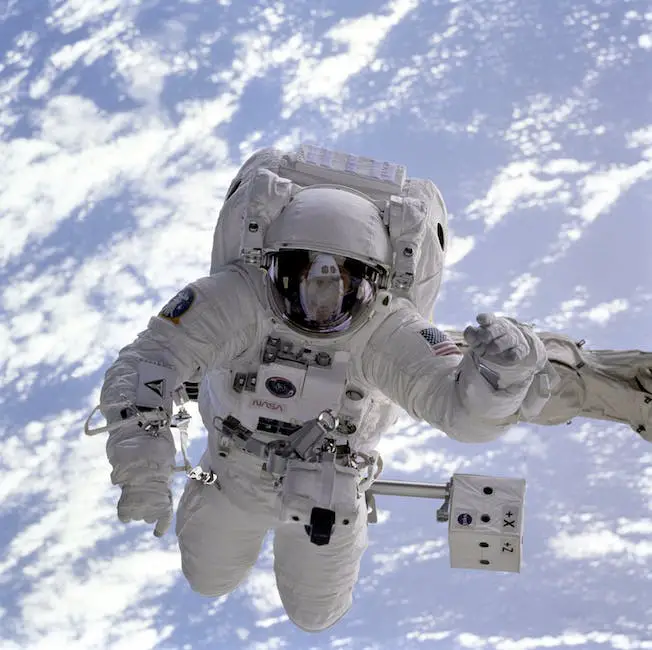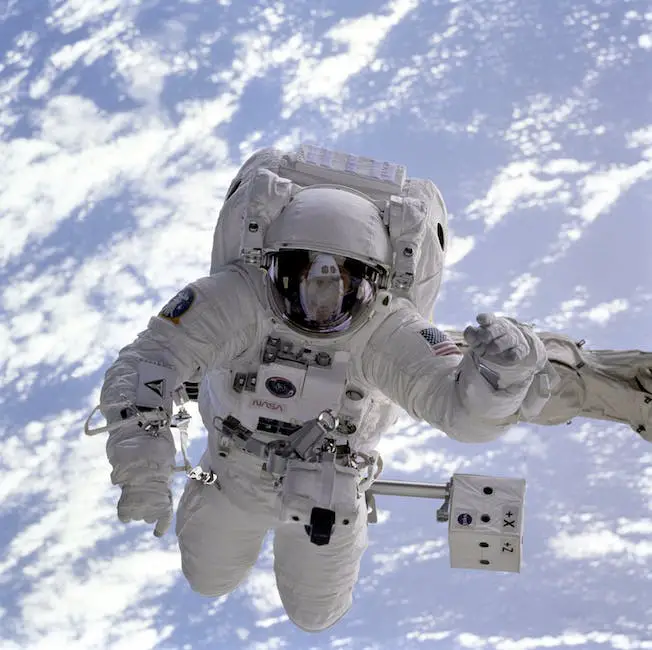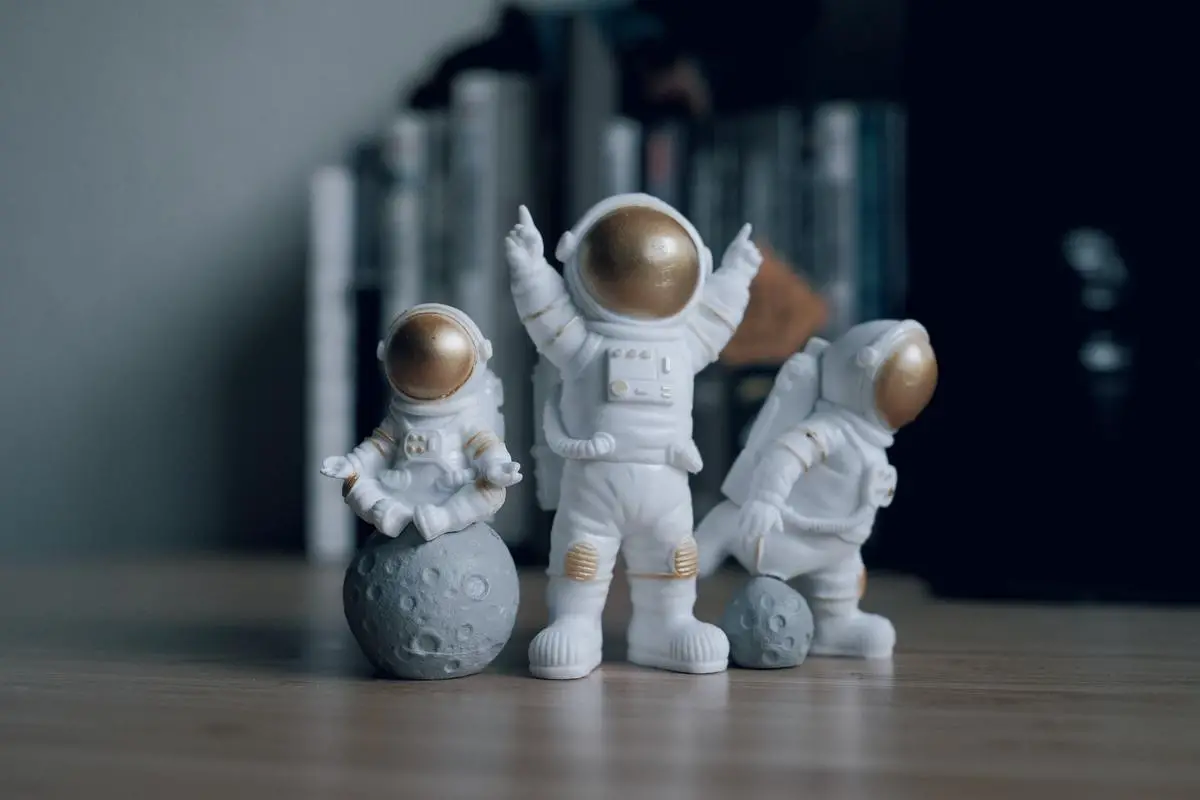Space, with all its mystery and wonder, holds unique challenges for those who venture into it. Among the bravest pioneers to have accepted this extraordinary gauntlet were the Apollo astronauts, who journeyed into the unknown and set the first human footprints on the lunar surface.
These hardy souls didn’t just have to grapple with the demanding technical aspects of the mission; they also faced significant health risks. The potential dangers, from space radiation exposure to the impact of microgravity, and even psychological stressors were constant companions of these trailblazing men.
This document unveils the nuances of these daunting perils, their effect on the astronauts’ health, and the longevity of these implications.
Contents
Space Radiation Exposure
Space Radiation Exposure
Space Radiation exposure is one of the most significant health risks faced by astronauts during space missions. The Apollo astronauts who journeyed to the moon between 1968 and 1972 were perhaps most seriously exposed to this hazard, owing to the moon’s thin atmosphere that lacks the protective magnetic field of the Earth.
Types of Space Radiation
Space radiation typically consists of three types: galactic cosmic rays (GCRs), solar particle events (SPEs), and trapped radiation. GCRs are highly energetic particles from outside our solar system, SPEs are bursts of radiation from the sun, while trapped radiation is from the Earth’s radiation belts. Among these, GCRs and occasional large SPEs pose the greatest potential risks to astronaut health.
Radiation Exposure Measurements
Radiation is typically measured in units of Sievert (Sv), which quantifies the amount of radiation absorbed by human tissues. The Apollo astronauts, on average, received a radiation dose of about 0.5 Sv. To put into context, this is equivalent to about 50 chest X-rays. This dose is well over the advisable annual occupational radiation limit set by the International Commission on Radiological Protection.
Implications for Apollo Astronauts’ Health
Excessive radiation exposure can lead to both immediate and long-term health concerns. Short-term effects include nausea, fatigue, and skin burns, while longer-term implications involve an increased risk for developing cancer.
While several Apollo astronauts have developed illnesses that could conceivably be related to their radiation exposure, it’s important to note that many other factors such as age, lifestyle, and genetic predisposition also play significant roles in determining health outcomes, making it challenging to determine the extent to which space radiation is responsible.
Protective Measures
NASA undertook several protective measures to shield astronauts from radiation. The Apollo missions were scheduled to avoid periods of predicted high solar radiation. The spacecraft were designed with materials that helped deflect some of the radiation, and the astronauts’ suits contained protective shielding.
An alarm system was also in place in the Apollo spacecraft that would alert the crew of SPEs, enabling them to move to the section of the vehicle with the thickest shielding.
While tremendous strides have been made in space exploration since the Apollo missions, the issue of astronaut exposure to space radiation is yet to be entirely resolved.
This issue stands as one of the persistent challenges in human spaceflight, warranting further research. Improving our understanding of the effects of space radiation on the human body and utilizing new technologies to provide enhanced radiation protection will be key aspects of future missions striving to solve this persistent issue.

Microgravity Impact on Physical Health
Highlighting the Implications of Microgravity on Astronauts’ Health
A common problem that all astronauts, including those on the Apollo missions, face is the effects of microgravity or the weightless conditions experienced in space. It puts the astronauts’ bodies under strain, leading to both short-term and long-term health issues. Specifically, microgravity induces noticeable physiological changes by impacting various body systems, including the skeletal, muscular, and cardiovascular systems.
Effects on the Skeletal System
One of the most significant impacts of microgravity is its effect on the skeletal system. In the absence of gravity, bones undergo a process similar to osteoporosis, losing density at an alarming rate. This negative impact, often referred to as “spaceflight osteopenia,” can be as high as 1-2% per month. Though recovery is possible once back on Earth, the risk for fractures and long-term bone health issues remains.
Muscular System Degradation
The muscular system also takes a hit in the weightless environment of space. Specifically, the muscles undergo atrophy – a process where they shrink in size due to the lack of use. Astronauts can lose up to 20% of their muscle mass within just 5 to 11 days in a microgravity environment. This muscle loss, particularly in the lower body, can lead to significant weakness and mobility issues.
Cardiovascular System Impacts
Cardiovascular health is another major concern for astronauts exposed to prolonged microgravity. The body’s circulatory system, used to pumping blood against the force of gravity, reacts to the new conditions by reducing plasma volume and red blood cell count. Astronauts returning from space often experience Orthostatic intolerance, a condition where they faint or feel dizzy when trying to stand after lying down, because the heart struggles to counter Earth’s gravity and send enough blood to the brain.
In addition to immediate cardiovascular problems, prolonged stays in space can also lead to long-term issues. Studies have shown a potential link between exposure to microgravity and the hardening of arteries, potentially increasing the risk of heart disease in astronauts.
Immune System Impact and Other Risks
Microgravity also affects the immune system, leading to a weakened defense against infections and diseases. The environment of a spacecraft can potentially lead to increased exposure to pathogens, making a functioning immune system critically important.
In addition to these, microgravity can also cause vision impairment, behavioral health issues, and an increased risk of certain types of cancer due to exposure to cosmic radiation, adding to the long list of health risks faced by Apollo, and indeed all, astronauts.
Addressing the Challenges of Microgravity
One of the overriding challenges faced in extended space missions is the exposure to microgravity. This can lead to significant physical deterioration, including skeletal and muscular degradation. To help counteract these effects, NASA and other space organizations have put into place exercise routines to be followed during the spaceflight.
However, there is still much to understand about the long-term impacts of microgravity on the human body. As we continue to push further out into space, it will be critically important to gain a better understanding of how to mitigate these impacts on astronauts’ health.

Psychological Stressors and Mental Health
Understanding Emotional and Psychological Strains Faced by Apollo Astronauts
The Apollo astronauts embarked on their missions in an era of worldwide focus on space exploration. Along with this, they were shouldering significant psychological strains. From intense feelings of isolation and confinement to an overwhelming sense of responsibility, these astronauts experienced numerous mental stressors while on their missions.
Understanding these potential impacts on their mental health gives us further insight into the diverse set of challenges presented by space travel.
Isolation and Confinement Impact on Mental Health
Prolonged isolation and confinement had the potential to lead to a multitude of psychological issues including claustrophobia, depression, and anxiety. Isolation, coupled with the ineffable vastness of space, could lead to a feeling of existential crisis and difficulty with reality perception.
Likewise, the confined space of the spacecraft, despite the technological marvel it represented, presented a challenging living and working environment. Performance pressure, sleep disruptions, and the general discomfort of living in artificially regulated environments also contributed to the likelihood of stress and anxiety.
Preventive Measures and Treatments for Astronauts’ Mental Health
NASA recognized the profound psychological challenges astronauts would face and developed preventative measures and treatments. Astronauts underwent rigorous psychological screening alongside their physical tests.
The aim was to ensure they possessed the mental toughness required for such challenging circumstances. This included screening for psychological disorders and personality traits that might impede their performance or mental health during the mission.
Furthermore, Apollo astronauts received specific training aimed at helping them to mitigate psychological stressors. This included simulations mimicking the isolation and confinement conditions they would experience during their missions.
Science also came to aid with the development of appropriate psycho-pharmacological countermeasures. The use of medications to help manage intense stress and anxiety was common. However, this was considered a last resort. The risk-benefit balance had to be carefully weighed given the potential impact of these medications on cognitive function and physical performance.
Telemedicine was another critical component in the mental health care of Apollo astronauts. Linked with earth, astronauts could access psychological support anytime they needed it. Regular check-ins were done to monitor and ensure astronauts’ mental wellness.
Psychological Support Post-Mission
The psychological support didn’t end with the mission. Many astronauts struggled to re-adapt to normal life after having had such a surreal experience. Issues like post-traumatic stress disorder, depression, and identity crises were common. NASA offered psychological support and counselling to help astronauts navigate these psychological challenges post-mission.
The Apollo astronauts bravely faced immense psychological challenges. Their rigorous screening and intensive training, coupled with supportive measures, ensured that these courageous individuals could overcome their struggles and make monumental strides for the entirety of mankind.
As we continue to pioneer into the future of space exploration, the lessons learned from the experiences of these astronauts remain invaluable. They serve as a guide in the advancement of preventative measures and treatment strategies aimed to safeguard astronaut mental health.

Post-mission Health Complications and Cause(Space disease)
Health Implications: Unpacking the Aftermath of Apollo Missions
Although often overlooked, space travel takes a severe toll on an astronaut’s health – a truth not alien to the valiant Apollo astronauts who played crucial roles in one of mankind’s most momentous journeys of exploration.
Their missions exposed them to unique environmental conditions, leading to a plethora of complex health complications collectively termed ‘space disease’. These conditions covering components like vision impairment and cardiovascular disorders, have become major points of medical interest for individuals involved in the astronaut program.
Vision Complications
One of the most common health complications faced by Apollo astronauts after their missions was vision impairment. The term Spaceflight-Associated Neuro-ocular Syndrome (SANS) is often used to describe the combination of abnormalities encountered. SANS is characterized by optic disc edema, globe flattening, choroidal and retinal folds, and refractive alterations.
This is believed to be a result of the body’s fluid redistribution in microgravity, which increases the cerebrospinal fluid pressure in the brain and spine. The lack of gravity, while in space, causes these fluids to pool in the upper body, potentially putting pressure on the back of the eye, affecting the astronaut’s vision.
Cardiovascular Diseases
Another significant health complication that Apollo astronauts faced post-mission is cardiovascular disease. Research indicates that space radiation exposure, particularly the heavy ion component of galactic cosmic rays, increased astronauts’ risk of developing cardiovascular disease. The unique environment of deep space missions, including isolation, circadian rhythm disruption, and potential nutritional deficiencies, may also play a role in the development of this disease.
A study published in ‘Scientific Reports’ suggested that Apollo astronauts, who traveled far beyond the Earth’s protective magnetic field, died from cardiovascular disease at a rate four to five times higher than astronauts who never went into space or those who traveled only to low Earth orbit.
Radiation Exposure Effects
In the realm of space travel, one of the most hazardous environmental factors is radiation. The risks are particularly significant for astronauts involved in deep space missions, such as the Apollo astronauts. Not only does radiation exposure increase the risk of cardiovascular disease, but it also raises the potential for acute radiation syndrome, certain types of cancers, central nervous system effects, and degenerative diseases.
The Apollo astronauts were the only humans to have traveled beyond low Earth orbit and venture into deep space, thus exposing themselves to potentially harmful levels of space radiation.
Mental Health Complications
The mental health of Apollo astronauts also deserves considerable attention. Post-traumatic stress disorder (PTSD), depression, and anxiety are potential risks when returning from space travel, due to the high-stress nature of the mission. The dramatic shift from the intense, life-altering experience of space travel back to everyday life on Earth can also be difficult emotionally for many astronauts.
In conclusion, the Apollo astronauts risked more than their lives on their heroic missions. They also put their long-term health on the line, facing significant risk of ‘space disease’ that resulted in a myriad of health issues.
Understanding these potential health risks is not only crucial for the support and care of retired astronauts but also essential for the safe and sustainable future of human space exploration. Early detection and preventative measures are essential to mitigate these risks and ensure our astronauts return not just as heroes, but as healthy individuals as well.

Pushing the boundaries of human exploration, the Apollo astronauts confronted the harsh realities and adversities of space travel, ultimately paving the way for future travelers. Each voyage not only expanded our understanding of the universe but shed new light upon the resilience and adaptability of the human body.
They faced the sweeping currents of space radiation, the weightless tug of microgravity, and the silent psychological toll, confronting them with dignity and valor.
After their return to Earth, their struggles were far from over as they wrestled with elusive diseases born in the vast void, forever marking them as harbingers of the new frontier.
Their experiences, tribulations, and triumphs continue to guide and inspire future journeys into the unknown, underscoring the imperative for ongoing research and preparedness in this challenging pursuit of knowledge.

With a passion for unraveling the mysteries of the moon, Dr. Luna Sterling is a highly-respected astrophysicist, a dedicated lunar enthusiast, and a captivating blogger. After earning her Ph.D. in Astrophysics from the Massachusetts Institute of Technology (MIT), she served as a lead scientist and mission planner for NASA, contributing significantly to various lunar missions.
For over two decades, Luna has been at the forefront of lunar science, pushing boundaries and pioneering discoveries that have enriched our understanding of the moon’s geological history. However, it’s her infectious enthusiasm for all things lunar that truly sets her apart.
In an endeavor to bring the moon closer to everyone, Luna started her blog, “Luna’s Lens: A Closer Look at the Moon.” With this platform, she offers a unique blend of intriguing moon facts, updates on lunar missions, and personal anecdotes from her experiences in the field, all told in an engaging and accessible manner.
Luna’s unique blend of scientific expertise and warm, humorous writing style has transformed complex astrophysics into compelling narratives that captivate her audience. As a gifted communicator, she leverages her knowledge and experience to relate scientific facts to everyday life, thus making her blog a must-read for both seasoned space enthusiasts and curious newcomers.
Interactive and inviting, Luna frequently encourages reader engagement through thought-provoking discussions and a monthly ‘Ask Dr. Luna’ feature, where she personally answers questions about the moon and space exploration. A celestial storyteller at heart, Dr. Luna Sterling’s passion for the moon is as vast as the cosmos she explores, making her an invaluable beacon in the world of lunar science.
